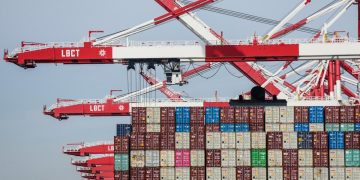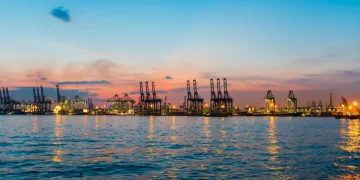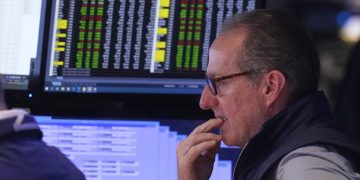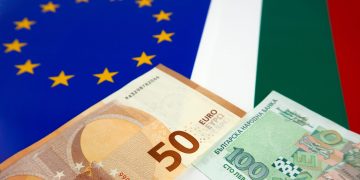In Q2 2024, satellite-based AIS (Automatic Identification System) tracking revealed a striking 20% increase in container loading activity at Brazil’s major ports compared to the same period in 2023. At the same time, global credit spreads—particularly in emerging markets—widened sharply as central banks tightened post-pandemic liquidity. This juxtaposition raises a pivotal question: how did Brazil’s soybean export boom emerge amid a backdrop of constrained global financing, and what does it signal for commodity markets, emerging economies, and trade flows moving into 2025?
At the heart of the dilemma lies a paradox. On one hand, rising soybean shipments should spark optimism—higher export volumes mean more earnings, driving currency strength and generating investor confidence in emerging-market debt. On the other hand, these flows occurred while global credit markets retracted, pressuring high-yield curve conditions and hurting risk assets. Understanding how Brazil’s physical export surge interplayed with financial tightening offers a lens into systemic symbiosis between real-economy trade and financial market liquidity.
Key Data and Background
Satellite AIS sensors placed on commercial vessels and port cranes provide an increasingly accurate, real-time barometer of trade volumes and activity. In May and June 2024, aggregated AIS data from Brazil’s largest soy-exporting ports—Paranaguá, Santos, and Rio Grande—showed a 20% surge in outbound container volumes relative to Q2 2023. Analysts estimate this translates to approximately 2 million additional metric tons of soy shipped.
This physical increase stands in stark contrast to global credit markets. Emerging-market credit spreads widened by over 150 basis points during the same timeframe, driven by aggressive rate hikes from the Federal Reserve and the ECB, rising geopolitical tensions, and a series of EM sovereign downgrades. Brazil’s sovereign USD bond spread over U.S. Treasuries expanded from 240 bps to 310 bps in Q2. (See Figure 1: Brazilian port AIS volumes vs. sovereign credit spreads, Q1–Q3 2024.)
Several structural factors supported the export surge:
- Record soybean crop in Brazil: Despite dry weather concerns in early 2024, Brazil’s soybean harvest reached approximately 155 million tons, up 8% year-over-year.
- Competitive edge in shipping logistics: Low freight rates and efficient port utilization accelerated loading activity.
- Resilient Chinese demand: China, accounting for over 60% of soy exports, maintained strong import volumes—driven by both animal feed demand and strategic commodity stockpiling.
Meanwhile, credit means tightened: the Fed’s balance sheet shrank by around $600 billion through Q2 2024 as quantitative tightening accelerated, shrinking dollar liquidity globally. Bond investors demanded higher spreads from EM issuers seen as vulnerable to funding stress.
Cross‑Market Impacts
Commodities and Emerging Markets
Brazil’s soybean surge supported agricultural commodity prices through Q2 and early Q3. Trackers such as Bloomberg and Reuters reported soy futures climbing 7% during the period, contrasting with a more subdued rally in other grain markets. The export data implied robust demand, offsetting concerns about slowing global trade.
For emerging-market equities and bonds, however, the message was mixed. Brazilian equities (IBOVESPA) rose only 3% in Q2, lagging regional peers, while sovereign bond spreads widened, reflecting credit-curve pressure. Locally listed agribusiness stocks like Bunge Brasil saw 12% gains, indicating sectoral gains amid broader underperformance.
Currency and Macro Flows
Brazil’s real appreciated by roughly 4% from May to July 2024, reflecting stronger export receipts and reduced currency pressure. This appreciation offset part of the negative impact from global EM capital outflows.
Meanwhile, other EM currencies such as the Turkish lira and South African rand depreciated by 8–10% over the same period. This divergence in FX performance reflected a growing commodity-driven regional differentiation during tightening cycles.
Historical Parallel: 2013 Taper Tantrum vs. 2024 Divergence
During the 2013 Fed taper tantrum, capital fled emerging markets, pushing down commodity prices and local currencies indiscriminately. In contrast, the 2024 episode split commodity-linked economies (like Brazil) from others, highlighting evolving decoupling from a unified EM reaction. In this environment, strong supply-side exports enabled Brazil to partially insulate itself despite global liquidity tightening.
Diverging Expert Perspectives
World Bank Viewpoint: Demand-Led Export Growth
A World Bank working paper in August 2024 attributed Brazil’s soy export surge to sustained global demand, especially from Chinese buyers facing domestic supply constraints. The analysis projected further price support, predicting a rebound in 2025 that would contribute positively to Brazil’s fiscal position and global food security.

Bloomberg Independent Analyst: Credit Tightening Masks Supply Stresses
Conversely, a Bloomberg independent research note cautioned that rising spreads may reflect underlying concerns about debt sustainability in Brazil and other EM economies. The analyst argued that credit tightening—heightened cost of borrowing—could overshadow export gains, especially if soy demand fades or crop conditions worsen.
Other Institutional Views
Goldman Sachs commodities team emphasized Brazil as “a standout EM beneficiary of the commodity cycle,” but raised alarms over credit spillovers: “Export strength may provide balance-of-payment relief—but financing challenges remain.”
IMF staff echoed concerns, urging Brazil to leverage export windfall towards building buffers and lowering debt-to-GDP ratios before global liquidity conditions deteriorate further.
Contrarian Theory from Growth Economists
Nobel laureate economist Paul Romer questioned whether physical trade data alone can predict systemic resilience. He warned that “strong export volumes may provide temporary currency relief, but sovereign credit reacts to fiscal sustainability and access to global debt markets.”
Outlook and Strategy
Optimistic Scenario
If China maintains soy imports and commodity prices stay elevated, Brazil stands to benefit from improved trade dynamics. Coupled with a disciplined fiscal policy, the country may narrow credit spread gaps, align with investment-grade prospects, and unlock further FX appreciation.
Neutral Scenario
Exports stabilize but do not accelerate, and credit spreads remain elevated near current levels. Brazil’s fiscal response determines whether buffers are sufficient to manage volatility without structural reforms.
Pessimistic Scenario
Drought or policy disruptions in Brazil impair production, while credit tensions widen due to global shocks. A combined crop-finance shock could drive sovereign spreads into the 400–500 bps range, triggering currency risk and debt market stress.
Investor Actionables
- Monitor AIS-based shipping alerts, crop health satellite data, and vessel lane patterns.
- Track global soy futures and Chinese import data for demand signals.
- Watch Brazil sovereign and corporate bond spreads relative to commodity export strength.
- Use hedges in FX or credit derivatives to offset potential spread rallies.
- Review Brazil’s fiscal trajectories ahead of policy decisions following 2025 elections.
Conclusion
Satellite AIS data uncovered a hidden surge in Brazilian soy exports in Q2 2024, even as credit markets tightened. This divergence underscores an emerging decoupling in global finance—where physical trade and financial liquidity diverge in response to macroeconomic forces.
While strong soy shipments bolster Brazil’s currency and commodity revenues, they do not fully insulate the country from broader credit market tensions. The interplay between real economic trade and financial credit conditions highlights a critical transitional risk zone for emerging-market countries in 2025.
Is Brazil merely riding out stormy credit cycles on a tide of strong exports, or does this surge signal a deeper realignment in global trade and finance? The answer may define the resilience of commodity-dependent economies in the next phase of tightening.
































